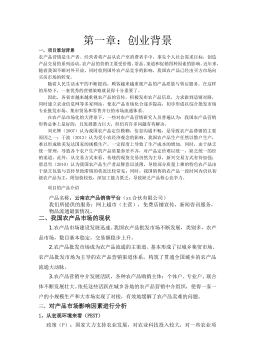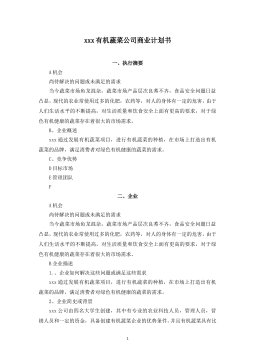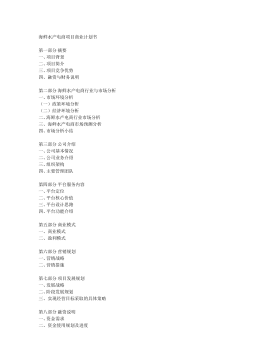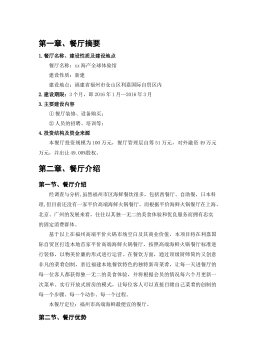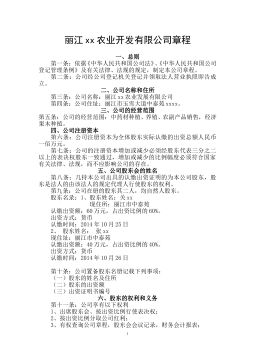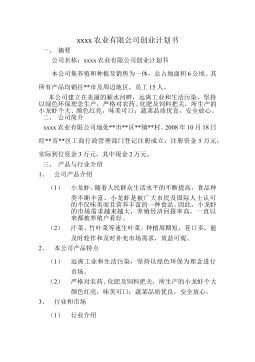轻量级工作流系统的研究与实现
VIP免费
摘 要
随着信息技术的迅猛发展和市场竞争的日益激烈,企业信息管理迫切需要一
种能够支持实现业务流程自动化的技术,把传统的信息管理与业务流程管理结合
起来管理企业的各种流程。工作流技术正是顺应这一需求孕育而生。工作流技术使
得应用系统的流程逻辑与业务逻辑耦合度降低,提高了应用系统的开发效率和可
维护性,从而使得企业可以很好地进行业务流程改造与重组,以适应市场的变化
与需求。
本文参考工作流管理联盟(Workflow Management Coalition,简称WfMC)制
定的规范,根据中小型企业业务对工作流软件的需求情况和工作流产品现状,本
着简单实用的原则,设计开发了一种面向中小型企业的轻量级工作流系统。文章
首先给出了轻量级工作流系统的总体架构,通过与J2EE技术、关系数据库技术相
结合设计了系统的三层架构。在工作流模型设计中,通过分析研究几种典型现代
企业的组织结构类型,设计了具有柔性的矩阵制组织角色模型,并通过基于多种
方式的角色授权实现了任务的动态柔性分配。在研究了多种现有的过程模型的基
础上,结合了活动网络图和Petri网过程模型的特点提出了一种基于令牌有向图的
过程模型。该模型在支持工作流管理联盟提出的六种基本路由结构的同时,实现
了对于可选分支和投票聚合两种柔性路由结构的支持,从而提高了过程模型的柔
性。然后文章对系统的数据库设计,过程建模工具、工作流引擎、客户端应用以及
系统的管理与监控工具等模块的设计和实现作了深入的研究。系统采用表单建模
结合图形化显示的方式设计和实现了过程建模工具。工作流引擎采用基于令牌有
向图的调度算法作为其调度策略,并在此基础上详细介绍了工作流引擎的功能设
计,同时对工作流运行状态、引擎的过程调度、条件分析和实例处理等模块的设计
与实现作了详细阐述。客户端应用为系统的普通用户提供了过程模板查询、过程实
例处理、任务处理和已完成任务监控等功能。客户端应用接口为客户端应用和应用
系统的开发提供了一系列比较完备的APIs。系统的管理与监控工具包括过程模板
的管理、过程实例的管理、活动实例的管理和用户角色的管理等功能,并为管理员
提供了任务重新分配和过程跳转两种实例的动态处理方法。最后,将设计并实现
的轻量级工作流系统应用在企业采购管理业务中。应用结果表明,系统具有良好
的易用性和可扩展性,并能满足中小企业业务系统开发的需求。
关键词:轻量级 工作流 工作流系统 工作流引擎 关系数据库 J2EE
ABSTRACT
With the great development of information technology and increasingly fierce
market competition, information management in enterprises require the technology
which can make business processes automatic and combine traditional information
management with business processes management. Workflow technology is to solve
this problem. Workflow technology’s introduction lowers the coupling between process
logic and business logic of the application system, reduces complexity of the application
development process and raises the application system development efficiency and
maintainability, so that enterprise can make it better to reengineer their business process
and they can adapt to the changes and requirements of the market.
According to the Workflow Management Coalition standard, based on the actuality
about workflow management product in the software market and the demand for
workflow software of medium and small enterprise business and according to the
simple but practicality principle, this thesis designs and develops the lightweight
workflow system. Combined with J2EE technology and relation database technology,
the thesis first presents the design of lightweight workflow system’s three level
structures. Second, a flexible matrix organization model is proposed after analysied
several typical organizational structures of modern enterprises. And dynamic and
flexible task assign is captitable by many types of authorization. After studying a
variety of existing process models, a token-based directed diagram process model is
presented. The model combines the advantages of Perti-net process model and activity
network diagram process model. It supports not only six basic routing structures
suggested by WfMC, but also the Select-spilt and Select-join structures, so that it is
more flexible than other process models. Third, the article gives the design of the
database and the design and implementation of the four main modules such as process
define tool, workflow engine, client application and managment and monitor tool. A
combination of form modeling and graphical showing of the model is used to design
and develop the process define tool. The workflow engine uses token-based scheduling
algorithm as its scheduling strategy. And the article introduces the detail designs and
implementations of the workflow engine such as the workflow running states, process
scheduling module, condition analysising module and instance handling module. The
client application makes an ordinary user to querry process model, to deal with process
instances and tasks and to monitor finished tasks. And the interface of the client
application provides the application system and the client application with a series
comparatively completely APIs. The managment and monitor tool is desigened to
manage process models, process instances, activity instances, users and the
organizational structure of the enterprise. It also provides administor with methods such
as task reassign and process redirector to deal with the dynmic changes of workflow
instances. Finially, the lightweight workflow system which is designed and realized is
applied in the purchase management business. And the result shows that the workflow
system is easy-to-use and extendable, so that it is suitable to the needs of the application
development in medium and small enterprises.
Key Word: Lightweight, Workflow, Workflow System, Workflow
Engine, Relation Database, J2EE
目 录
中文摘要
ABSTRACT
第一章 绪 论...............................................................................................................1
§1.1 工作流的起源及发展.......................................................................................1
§1.2 国内外研究现状及不足...................................................................................2
§1.3 本文研究内容及意义.......................................................................................4
§1.4 论文的组织结构...............................................................................................5
第二章 工作流技术概述...............................................................................................6
§2.1 工作流的相关概念...........................................................................................6
§2.2 工作流管理系统概念.......................................................................................8
§2.2.1 工作流管理系统的功能........................................................................8
§2.2.2 工作流管理系统的体系结构................................................................9
§2.3 工作流参考模型.............................................................................................12
§2.3.1 工作流参考模型框架..........................................................................12
§2.3.2 工作流参考模型接口介绍..................................................................13
§2.4 工作流系统用例图.........................................................................................15
§2.5 本章小结.........................................................................................................15
第三章 轻量级工作流系统的总体设计........................................................................17
§3.1 系统的设计思想.............................................................................................17
§3.2 系统的总体架构设计.....................................................................................18
§3.3 工作流模型设计.............................................................................................20
§3.3.1 工作流模型的组成..............................................................................20
§3.3.2 组织角色模型......................................................................................21
§3.3.3 过程模型..............................................................................................24
§3.4 数据库设计.....................................................................................................31
§3.4.1 实体关系图..........................................................................................31
§3.4.2 数据库的物理结构设计......................................................................32
§3.5 本章小结.........................................................................................................40
第四章 轻量级工作流系统的详细设计与实现............................................................41
§4.1 过程建模工具.................................................................................................41
§4.1.1 过程建模工具的设计..........................................................................41
§4.1.2 过程建模类的实现..............................................................................43
§4.1.3 过程建模的界面实现..........................................................................46
§4.2 工作流引擎.....................................................................................................48
§4.2.1 工作流引擎的设计..............................................................................48
§4.2.2 工作流运行状态..................................................................................51
§4.2.3 过程调度..............................................................................................54
§4.2.4 条件分析..............................................................................................58
§4.2.5 实例处理..............................................................................................61
§4.3 客户端应用.....................................................................................................61
§4.3.1 客户端应用的设计..............................................................................62
§4.3.2 客户端应用接口..................................................................................64
§4.4 管理与监控工具.............................................................................................65
§4.4.1 管理与监控工具的设计......................................................................65
§4.4.2 过程模板及实例的管理与监控..........................................................66
§4.4.3 组织角色的管理..................................................................................67
§4.5 本章小结.........................................................................................................68
第五章 轻量级工作流系统的应用................................................................................69
§5.1 系统的部署.....................................................................................................69
§5.2 采购管理业务的分析.....................................................................................69
§5.3 工作流在采购管理业务中的应用.................................................................70
§5.3.1 工作流逻辑抽象..................................................................................71
§5.3.2 工作流过程的定义..............................................................................72
§5.3.3 工作流过程的执行..............................................................................73
§5.4 应用效果.........................................................................................................76
§5.5 本章小结.........................................................................................................77
第六章 总结与展望.....................................................................................................78
§6.1 论文总结.........................................................................................................78
§6.2 今后的展望.....................................................................................................79
参考文献.........................................................................................................................80
第一章 绪论
第一章 绪 论
§1.1 工作流的起源及发展
工作流[1]的概念起源于生产组织和办公自动化领域。它是针对日常工作中具有
固定程序的活动而提出的一个概念。在传统的应用中,企业和行政管理部门的业
务工作的主要内容就是在不同的部门之间进行文件和信息的传递,这种工作方式
的缺点是需要花费大量的人力资源,且生产和经营效率较低。工作流技术是辅助
实现企业业务过程建模、业务过程仿真分析、业务过程优化、业务过程管理与集成
最终实现业务过程自动化的核心技术。针对企业业务过程,运用工作流技术的理
论知识进行详细的分析、设计和建模,不仅可以规范企业的业务流程、发现业务流
程中的不合理环节进而对企业的业务流程进行优化和重组,而且在科学理论指导
下所建立的业务流程模型的本身就是企业非常重要的知识库和规则库,可以成为
指导企业实施计算机管理信息系统的模型,因此工作流技术应用的意义非常重大。
实际上,自从进入工业化时代以来,有关过程的组织管理和流程的优化工作
就一直在进行,它始终是企业管理的主要研究内容之一,只不过在没有引入计算
机信息系统的支持以前,这些工作都是由人工来完成的。在计算机网络技术和分
布式数据库技术迅速发展,多机协同工作技术日益成熟的基础上,于20世纪80年
代中期发展起来的工作流技术为企业更好地实现经营目标提供了先进的手段 。
1993年工作流管理联盟(Workflow Management Coalition, WFMC)的成立标志着
工作流技术在计算机应用研究领域之中被明确地划出了自己的一席之地,相应的
概念和术语也得到了人们的共识。
进入20世纪90年代,随着计算机与网络技术的迅速发展,特别是在Internet应
用日益普及的情况下,现代企业的信息系统的分布性、异构性和自治性的特征越
来越显著,相应的企业信息资源也分布在异构的计算机环境中,信息源之间的连
接表现出松散藕合的特点,这样的信息系统环境简称为HAD环境(异构、自治、分
布)[2]。企业物理位置的分散性和决策制定过程的分散性特征日益明显,对日常业
务活动的信息需求日益提高,Client/Server体系结构和分布式处理技术(CORBA,
WWW, OLE, JAVA等)的广泛应用,都说明了这样的事实:集中式信息处理的时
代即将成为过去,取而代之的将是大规模的异构分布式信息处理与应用执行环境
在这种大规模的分布式环境下高效运转相互关联的任务,并且对执行的任务进行
密切监控己成为一种发展趋势[3]。目前,在全球范围内,对工作流的技术研究以及
1
轻量级工作流系统的研究与实现
相关产品的开发已经进入了更为繁荣的阶段,更多更新的技术被集成进来,文件
管理系统、数据库、电子邮件、移动计算、Internet服务等都已经被容纳到工作流管
理系统之中。工作流产品的市场也以每年两位数字的速度迅猛增长。时至今日,工
作流技术已经成功地运用到图书馆、医院、保险公司、银行等行业和为数众多的工
业生产领域。作为支持业务经营过程重组(Business Process Reengineering, BPR)
和经营过程自动化(Business Process Automation, BPA)的一种手段,工作流技术
的研究应用日益受到学术界和企业界的重视。许多大学和研究机构也致力于工作
流技术的进一步发展,开展了一系列的研究项目,取得了显著的成果[4]。
§1.2 国内外研究现状及不足
企业的需求为工作流技术的应用提供了广阔的市场前景。因此,工作流技术
的应用范围不断拓展。工作流技术的发展,经过十年几的努力,取得了一定的成
果。
国外近年来在工作流方面的学术研究十分活跃,特别是在北美和欧洲等地,
相应的研究机构纷纷成立。美国佐治亚大学计算机系的LSDIS实验室(Large Scale
Distributed Information System Lab)研究开发的具有自适应能力的工作流管理原
型系统Meteor(Managing End-To-End Operations)[5]是基于CORBA的完全分布的
工作流系统,以CORBA产品ORBWork作为底层的通信支持,并使用CORBA来实
现系统的互操作和数据源的封装。Meteor实现了一个能够支持大规模复杂应用的
自适应的工作流管理系统,并保证这些应用在异构企业环境中能够正常运行 。
Meteor研究项目的另一个工作流管理原型系统WebWork则完全基于web[6]。来自西
班牙、意大利和荷兰的五个合作伙伴联合开发的工作流管理系统WIDE(Workflow
on Intelligent and Distributed Database Environment)[7]将分布式数据库和主动数据
库技术应用于工作流管理系统,为工作流的实现方法提供先进的、面向应用的技
术支持和功能强大的组织模型,并可以灵活地实现对不同类型异常情况的处理 。
IBM Almaden研究中心所进行的研究项目Exotica在工作流分布执行方面提出了一
种能够完全分布的执行模型,Exotica/FMQM[8]是该项目完成的基于永久消息队列
的分布式工作流系统,它通过持久消息的方式来保存工作流的相关执行信息,使
得每一个执行节点都是相互独立的,工作流流程的执行不以某一个节点为中心,
完全实现了分布。这种方式大大提高了系统的可靠性、可扩展性以及柔性。除此之
外还有瑞士苏黎士大学计算机系的事件驱动分布式工作流系统EVE,达特茅斯大
学计算机系设计开发的一种基于可移动代理的工作流系统DartFlow,瑞士联邦银
行和萨尔兰大学共同研究的基于状态和活动图的工作流系统Mentor,惠普实验室
2
第一章 绪论
的OpenPM工作流系统,德国埃朗根大学的MOBLE工作流系统等系统。
国内工作流技术的研究起步较晚,目前正处于迅速发展阶段,虽然己经有了
不少研究人员从不同角度开展了工作流管理及其相关技术的研究,但是,该领域
中的许多关键技术问题还处于探索阶段。清华大学、东北大学、上海交通大学等高
校和研究机构都进行了一定的研究工作。其中,上海交通大学的基于Petri网的分
布式工作流管理的研究 [9] ;浙江大学研制的工作流过程描述语言(Workflow
Process Definition Language, WPDL)编译制导的工作流建模支撑平台;西北大学
软件工程研究所的基于信牌驱动式工作流计算模型[10],都取得了良好的研究成果。
尽管经过工作流产品供应商与工作流研究人员十几年的不懈努力,工作流技
术由最初的萌芽状态逐步发展起来,并取得了相当的成果,但是从工作流系统的
实际应用状况来看,还远没有达到人们所期待的水平。在工作流管理系统开发的
最初阶段缺乏统一的、普遍遵循的标准以及限于当时软件支撑技术的水平,导致
不同公司的工作流管理系统在功能上以及所采用的支撑技术、开发技术和接口上
都呈现出非常大的差异。这是目前工作流管理系统存在问题的主要原因之一。目前
在经营过程中采用工作流管理系统的企业并不普遍,只集中在一些大型企业,且
这些系统的应用范围也十分有限,它们并不能全方位地支持企业的关键业务流程
在我国,大多数企业特别是中小型企业对“工作流”这个名词还比较陌生,更不
用说工作流管理系统的普及实施了。从企业用户应用的角度来分析产生这种状况
的主要原因有以下几点:
1、缺乏统一可实际操作的工作流模型。目前许多的工作流模型没有将过程模
型和组织模型结合起来考虑,缺乏对活动执行者的柔性支持。
2、缺乏柔性。一些企业的实际应用常常有对执行路由的动态需求以及工作项
执行人的动态指派,对于这些需求现有的工作流系统都不能很好的给予支持。
3、缺乏互操作标准。不同厂商提供的工作流产品可能各自有一套工作流模型
以及API函数。用户一旦选定一种产品,就很难再过渡到其它同类产品上,而且不
同的系统之间缺乏互操作的接口。
4、缺乏对并发访问、事务处理和异常处理的可靠支持。
5、缺乏统一的应用集成框架。在工作流系统与企业原有的各个应用系统集成
的方式方法上还没有统一的标准,很大程度上要受到外部应用的限制。
6、实现的复杂性。工作流应用的开发不仅仅是过程的定义,还需要完成其他
许多任务。目前的工作流产品为这些任务的完成提供的帮助能力有限,所有的工
作流应用都需要工作流产品供应商与应用开发人员进行很长时间的合作才能最终
完成。
3
轻量级工作流系统的研究与实现
§1.3 本文研究内容及意义
当前己经有不少商业化的和开源的工作流管理系统,多数工作流产品从数据
存储到运行环境往往都有一整套独特的体系结构,除了具备了工作流的基本功能
外,还同时宣称可以任意集成第三方的应用,有的还嵌入程度不等的应用开发功
能,这些系统都不同程度上存在着一定的学习难度,并且这些系统的二次软件开
发及维护成本极高。但是对于大多数的企业,特别是中小企业而言,他们需要的
并非是这些架构庞大、结构复杂的工作流系统,他们不追求工作流引擎功能的完
备和复杂,只是想实现与自身企业有关的那些必不可少的功能和特征,并希望有
一个较低的软件开发成本。针对上述问题,本文在深入研究工作流技术的基础上
提出了一个基于J2EE和关系数据库的轻量级工作流系统设计方案,本文所开展的
主要研究工作如下:
1、通过对工作流技术的阐述,分析了工作流目前发展的现状和不足,圈定了
轻量级工作流系统的研究,并为自己的相关研究工作划定了问题域范围。
2、研究了工作流管理系统功能层次及系统基本结构,较为完整的分析了工作
流参考模型的模型框架及接口功能。
3、本着轻量级的设计原则,将工作流系统构建在J2EE架构中,设计了轻量级
工作流系统的总体架构。
4、针对中小企业的应用特点,设计了工作流系统的组织角色模型和基于令牌
有向图的过程模型,并给出了工作流系统的数据库设计。
5、详细设计和实现了本文轻量级工作流系统的过程建模工具、工作流引擎、客
户端应用、管理与监控工具等功能模块。采用表单建模结合图形化显示的方式设计
和实现了过程建模工具。详细设计了工作流引擎的功能,并对工作流运行状态、工
作流引擎采用的基于令牌有向图的工作流调度算法和工作流引擎的条件分析、实
例处理等模块的设计与实现作了深入研究。介绍了工作流系统的客户端应用及提
供的客户端应用接口的设计和实现。最后,说明了工作流系统的管理与监控工具
的设计与实现。
6、将轻量级工作流系统应用于采购管理业务中,对系统的功能和适用性进行
了验证。
§1.4 论文的组织结构
本论文共分六章,具体内容安排如下:
第一章,介绍论文研究的背景和意义,研究内容及论文结构。
4
摘要:
展开>>
收起<<
摘要随着信息技术的迅猛发展和市场竞争的日益激烈,企业信息管理迫切需要一种能够支持实现业务流程自动化的技术,把传统的信息管理与业务流程管理结合起来管理企业的各种流程。工作流技术正是顺应这一需求孕育而生。工作流技术使得应用系统的流程逻辑与业务逻辑耦合度降低,提高了应用系统的开发效率和可维护性,从而使得企业可以很好地进行业务流程改造与重组,以适应市场的变化与需求。本文参考工作流管理联盟(WorkflowManagementCoalition,简称WfMC)制定的规范,根据中小型企业业务对工作流软件的需求情况和工作流产品现状,本着简单实用的原则,设计开发了一种面向中小型企业的轻量级工作流系统。文章首先...
相关推荐
-
生态农业项目商业计划书VIP免费
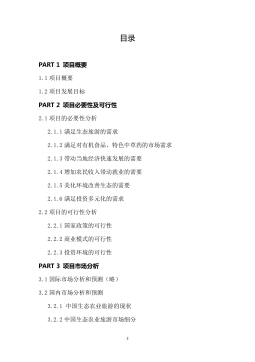
 2024-12-31 30
2024-12-31 30 -
牛奶创业计划书VIP免费
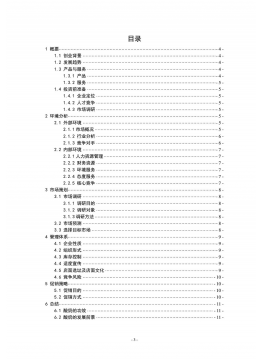
 2024-12-31 6
2024-12-31 6 -
南京现实版开心农场VIP免费

 2024-12-31 8
2024-12-31 8 -
绿色蔬菜农产品批发创业计划书VIP免费
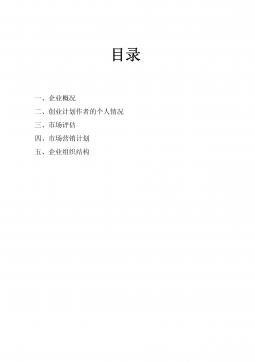
 2024-12-31 10
2024-12-31 10 -
绿色农产品销售创业计划书VIP免费
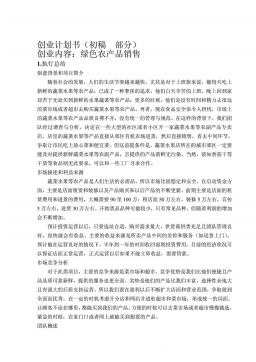
 2024-12-31 8
2024-12-31 8 -
xx蔬菜配送有限公司创业计划书样本VIP免费
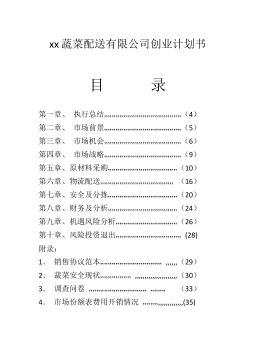
 2025-01-09 5
2025-01-09 5 -
现代农业生态园创业计划书范文VIP免费

 2025-01-09 12
2025-01-09 12 -
农场创业计划书模板VIP免费
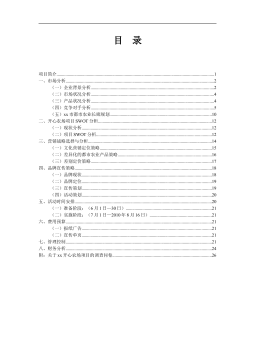
 2025-01-09 17
2025-01-09 17 -
奉节县特色农产品电子商务创业计划书模板VIP免费
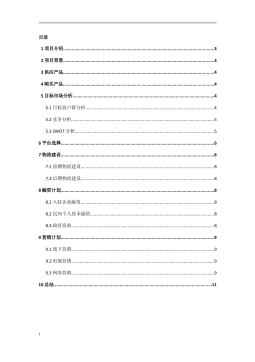
 2025-01-09 13
2025-01-09 13 -
中国首家IT高科技化农林项目商业计划书VIP免费
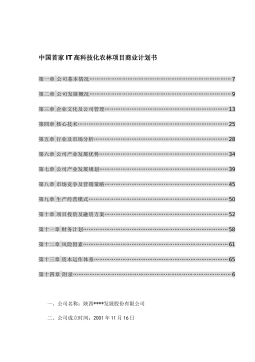
 2025-01-09 11
2025-01-09 11
作者:高德中
分类:高等教育资料
价格:15积分
属性:88 页
大小:3.2MB
格式:DOC
时间:2024-11-19


